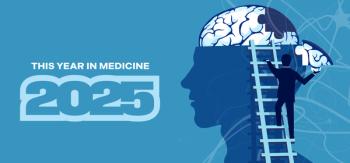
|Slideshows|February 7, 2019
Migraine Treatment Advances Spell Relief
Author(s)Leo Robert
Find concise summaries of the latest management recommendations and research findings in this brief highlights slideshow.
Advertisement
Newsletter
Keep your finger on the pulse of neurology—subscribe to NeurologyLive for expert interviews, new data, and breakthrough treatment updates.
Advertisement
Latest CME
Advertisement
Advertisement
Trending on NeurologyLive - Clinical Neurology News and Neurology Expert Insights
1
Brain-Penetrant Molecule GT-02287 Demonstrates Reversal of Glucosylsphinogosine in Parkinson Disease
2
Remyelinating Agent PIPE-307 Falls Short in Phase 2 Trial of Relapsing Multiple Sclerosis
3
Repositioning GLP-1 Drugs for Neurologic Disease: Evidence, Advances, and Outlook
4
CAPN2-Targeting Agent AMX0114 Shows Safe Profile in Phase 1 LUMINA Trial of ALS
5




















